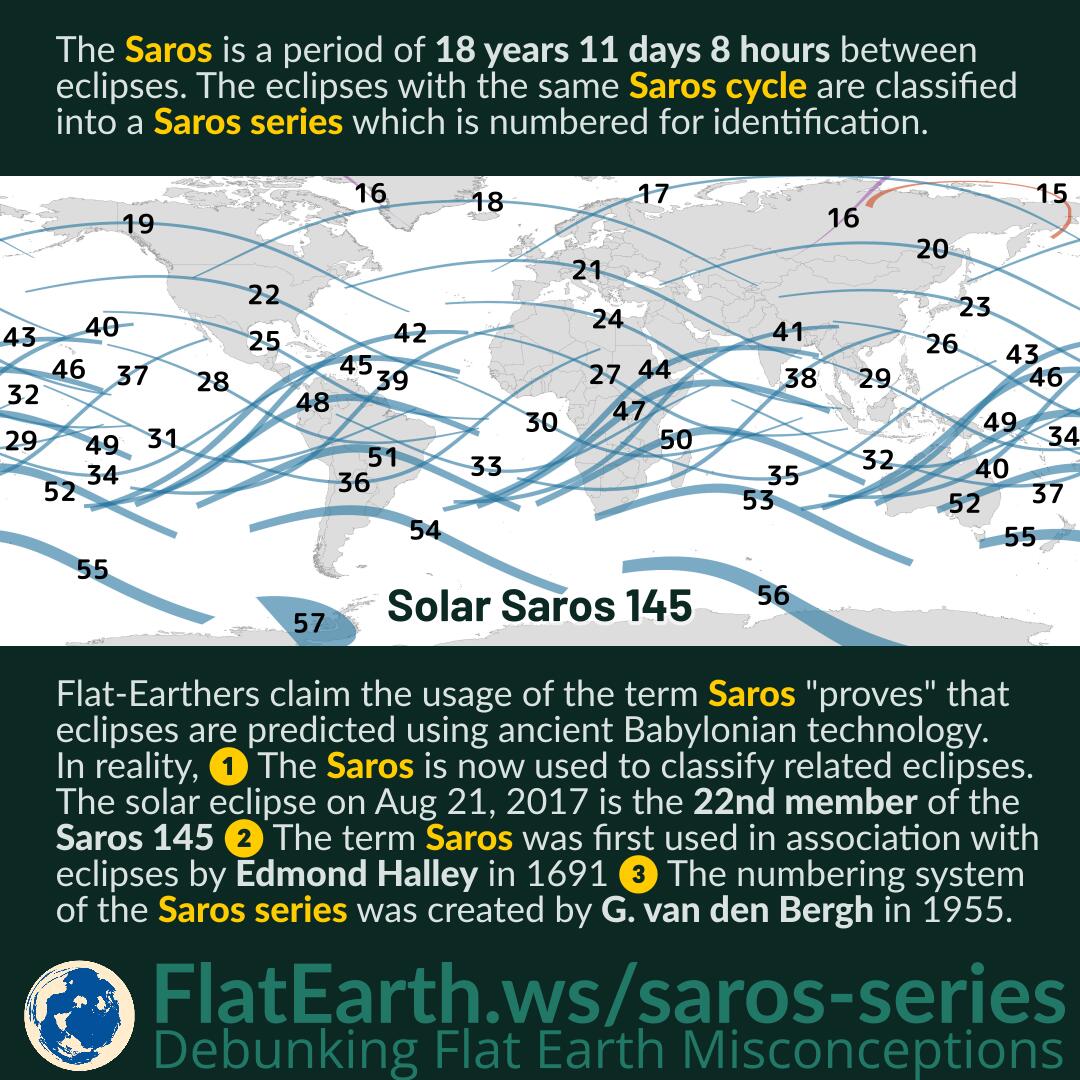The Saros is a period of 18 years, 11 days, and 8 hours between related eclipses. The eclipses with the same Saros cycle are classified into a Saros series which is numbered for identification.
Flat-Earthers claim the usage of the Babylonian term Saros “proves” that eclipses are predicted using ancient Babylonian technology. In reality, the Saros is now used to classify related eclipses. For example, the solar eclipse on August 21, 2017 is the 22nd member out of 77 in the Solar Saros 145.
The term Saros was first used in association with eclipse by Edmond Halley in 1691. The Babylonians never used the term Saros to describe eclipses. And the numbering system of the Saros series was created by G. van den Bergh in 1955.
A Saros series overlaps with several other Saros series. There can be two to five solar eclipses in a year, which belong to different Saros series. At any one time, there are about 40 Saros series in progress. After a Saros series ends, a new Saros series will begin and take its place.
The Saros cycle can be used to roughly predict future eclipses. However, today, we can also predict the occurrence of eclipses in sub-second resolution. We can also predict the exact path and location where a solar eclipse will occur. Even the terrain of the Moon and Earth are accounted for. We can also predict related phenomena like Baily’s Bead and the shape of Corona in advance. We cannot predict these phenomena from the cycle alone.
We use the Saros cycle similar to how we use the unit of time ‘year.’ One year is the period the Earth takes to travel once around the Sun. Each year is sequentially numbered to make it easier for us to reference a specific year. For example, this article was written in the year 2021, a few days after the 56th lunar eclipse of the Saros 121.
Reference
- Fred Espenak – Wikipedia
- Eclipses and the Saros – NASA
- Solar Saros 145 – Wikipedia
- Solar Eclipse of August 21, 2017 – Wikipedia
- Baily’s beads – Wikipedia
- Scientists Used NASA Data to Predict the Eclipse Corona – NASA
- Corona – Wikipedia


